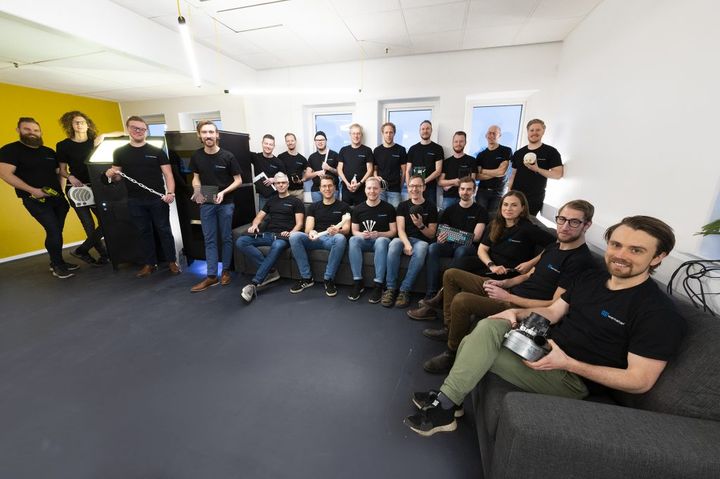
Wematter announced they’ve raised a large amount of investment that should enable them to grow significantly.
The Swedish company was founded in 2014 and has been developing a powerful SLS 3D printer, the “Gravity”, that can build very strong nylon parts. By ingeniously combining powder and machine design, they’ve been able to meet this goal.
They’ve also been doing considerable development on the software side of their system, “Deep Space”, which has been designed to be easy to use.
Most recently the company announced a new accessory, the “Atmosphere”, which provides precision control of the build chamber’s atmosphere. This not only increases part quality, but also ensures uniform surface coloration, as you can see in this image:

Now they’ve announced a massive investment round, which is curiously composed of two portions. The total investment is €4M (US$4.7M), and it is based on issuance of new shares to the tune of €2.6M (US$3M), and new cash provided by existing investors in the amount of €1.4M (US$1.7M).
The investment by new investors is understandable: they surely feel that Wematter is set to grow strongly in the future. But why would the existing investors choose to add more funds?
Sometimes this is done when a company is short funds and turns to its investors for a cash infusion. That’s not the case here because if that were the case there would not be any new external investors.
You might think their additional investment is because they believe in the company’s future, and perhaps that’s the case. But I don’t think that’s the reason. I suspect the reason is to avoid dilution.
Here’s the problem: the company is issuing new shares for the new investor. These new shares add to the total number of shares available, and thus “dilute” the existing shares. If someone owned, say, 50 of 100 shares, they’d have 50%. But if another 50 shares were added to total 150, then the 50 share owner would suddenly find themselves owning not 50% of the shares, but 33%.
My suspicion is that the existing shareholders wanted to maintain their ownership ratio and bumped up their percentage investment, buying some of the additional shares.
Investors want to do that because it can be important when looking at who controls a company. Whoever owns (or can corral) more than 50% of the company shares can control the company. That’s often why investors sometimes inject new funds, so that they can maintain their level of control.
Is that the case in this new Wematter investment? I have no idea, but that’s my guess.
Regardless, the management of Wematter suddenly finds themselves awash in millions to put to good use. Today the company is still relatively small in absolute terms, so this investment is significant.
Wematter’s Board Chair, Håkan Dahllöf, said:
“For many within the Swedish industrial sector it’s been a challenge to raise venture capital during the current pandemic, but I believe that we succeed by offering a sustainable product together with long-term business relationships. We can therefore now welcome new investors who also see a company with a product and an offer that makes a difference for our customers.
The issue enables a market introduction and a production start-up, which together with broader ownership, paves the way for an upcoming listing.”
This suggests they will be broadening their market and moving towards full production of the Gravity 3D printer. However, the phrase “upcoming listing” sounds intriguing. Does this mean that Wematter wishes to transform into a public company and be listed on a stock exchange? It’s possible, although it may be better for them to build up a bit more before doing so. That would provide them with an even more interesting platform for public investors.
Via Wematter
